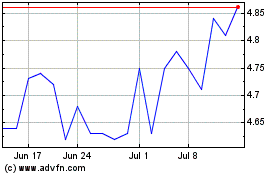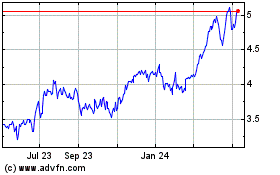MADRID—Spaniards set to lose their banking jobs in the coming
months might fault their bank bosses. They should save some blame
for Mario Draghi.
Mr. Draghi, the head of the eurozone's central bank, has
repeatedly cut interest rates to jolt Europe's economic growth.
Last Thursday he said the European Central Bank was willing to use
"all instruments available," including additional rate cuts, to
spur expansion.
While some consumers and businesses have benefited from lower
payments on their loans, subzero rates have chipped away at banks'
profitability. In Spain this has forced banks to cut costs.
Banco Santander SA, the eurozone's largest lender by market
value, announced this month that it is closing 450 smaller bank
branches and cutting up to 1,660 positions in Spain this year,
according to an internal staff memo and a person close to the
bank.
Spain's No. 3 bank, CaixaBank SA, said it has reached early
retirement agreements with up to 484 employees to trim salary
expenses. Small regional lender Liberbank SA has plans to shutter
up to 25% of its bank branches during the next two years and peer
Banco CEISS has announced it will cut up to 1,120 jobs.
When major Spanish lenders report their first-quarter earnings
this week, analysts expect an overall weak set of results—and
further impetus for slashing costs.
Executives at Spanish banks are seasoned at closing offices and
cutting staff. A property boom went bust in 2008, forcing dozens of
weaker lenders to close, merge or be purchased. With help of a
European Union bailout, the banking sector recovered and Spain grew
out of a recession. But now the banks face gale-force
headwinds—negative interest rates, lackluster demand for home
mortgages, muted returns on business loans—that show no signs of
subsiding.
"Spain's financial sector is confronting a period of great
change," Santander Spain country head Rami Aboukhair wrote in a
memo to employees explaining the branch closures and layoffs. "The
current economic context, greater regulatory requirements and the
evolution of client behavior toward new technology makes it
necessary to move more quickly in our commercial
transformation."
Another factor in branch closures in Spain is the shifting
habits of clients, bank executives say. Younger Spaniards in
particular shun visits to physical offices in favor of online
clicks to take out a consumer loan or make a payment.
Overall, however, the cutbacks are aimed primarily at offsetting
a long decline in the banks' earnings. Their net interest income
and fees fell by 31% from December 2009 to December 2015, while
operating costs declined by 12.5%, according to data from Spain's
central bank.
"Profitability is under a lot of pressure," Citigroup analyst
Stefan Nedialkov said. That's "the urgency that is making the banks
focus more on costs now. Digital is definitely a factor, too, but
it's not the driving factor."
Spanish banks cost-to-income ratios "were always best in class,"
Mr. Nedialkov said. "But now top line growth isn't there," he
added, and that is forcing banks to rethink a model that
prioritizes a physical presence in communities throughout
Spain.
Spain has more branches per person than any other country in the
EU except Cyprus, according to ECB data through 2014. Even after a
26% decline in branches between 2010 and 2014, Spain has around
three times as many bank branches as the U.K.
"We will see less capillarity in the financial system in Spain"
in coming years, Banco de Sabadell SA Chief Executive Jaime
Guardiola told journalists on Friday. "Progress has already been
made."
Bank profits have been hit especially hard by a decline in the
euro interbank offered rate. Euribor, as the benchmark is known,
underpins most Spanish mortgages, which fluctuate when the interest
rate changes. The 12-month Euribor has plummeted from 2.12% in
April 2011 to around -0.01 this month.
Starting several years ago, most Spanish banks included
interest-rate floors in their mortgage contracts—a limit on how far
borrowers' monthly payments could fall. But Spanish courts have
ruled that many of those mortgage floors weren't spelled out
clearly enough to consumers and ordered them to be removed,
triggering a drop in bank revenue.
Spain's economy has posted strong growth in the past two years,
but demand for mortgages remains historically weak as borrowers
choose instead to pay off existing debt. That has forced Spanish
banks to rely more on business loans. But they all did so en masse,
driving down the interest rates they charge, another hit to
profits.
Low interest rates means that banks, for instance, also pay
customers less for their deposits. But those lower funding costs
haven't been enough to offset the other negative trends.
In May of last year, Santander introduced a new higher interest
checking account in Spain. It was a costly launch, at least in the
short term, for Santander itself as well as for rivals who tried to
match the offer.
That has been a further drag on Spanish banks' profits.
Write to Jeannette Neumann at jeannette.neumann@wsj.com
(END) Dow Jones Newswires
April 26, 2016 06:45 ET (10:45 GMT)
Copyright (c) 2016 Dow Jones & Company, Inc.
Banco Santander (NYSE:SAN)
Historical Stock Chart
From Mar 2024 to Apr 2024

Banco Santander (NYSE:SAN)
Historical Stock Chart
From Apr 2023 to Apr 2024
